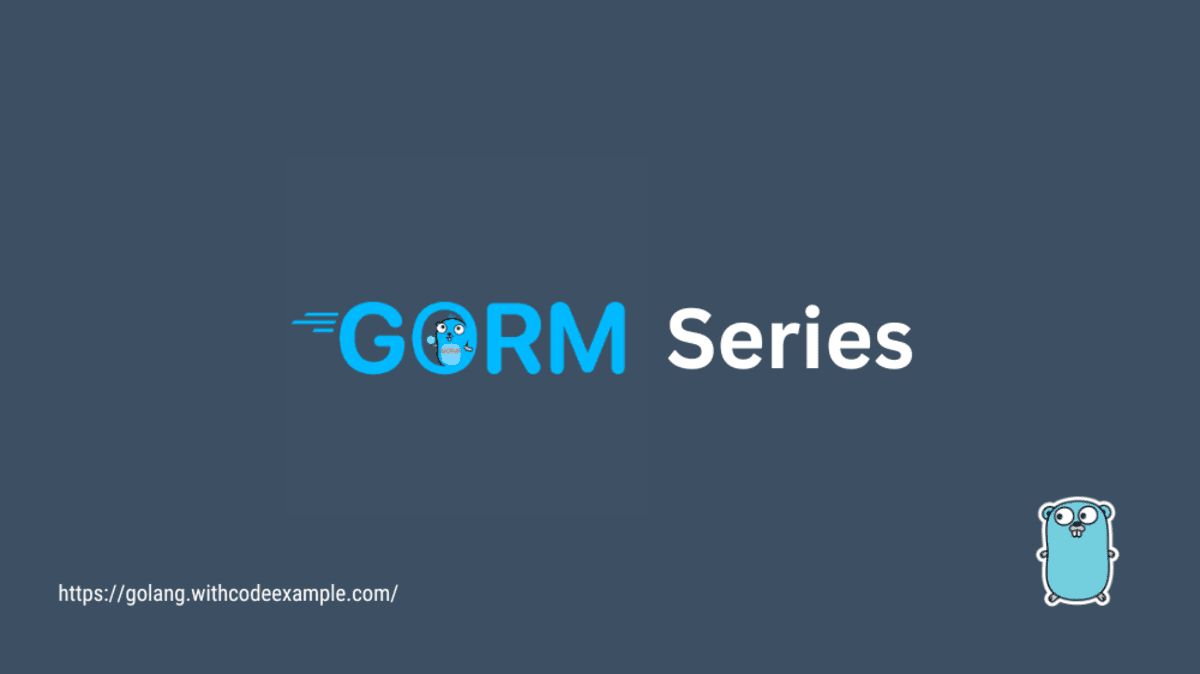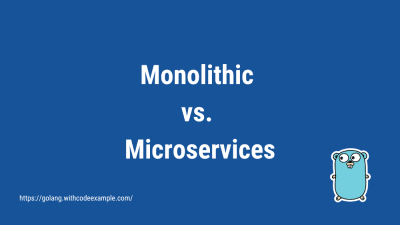A Guide to CRUD Operations with GORM
- With Code Example
- August 31, 2023

Series - GORM
- 1: GORM: Effortless Database Management in Go
- 2: Defining Models in GORM
- 3: A Guide to CRUD Operations with GORM
- 4: Advanced Querying with GORM
- 5: A Guide to Migrations in GORM
- 6: Transactions and Error Handling with GORM
- 7: Hooks and Callbacks in GORM
- 8: Concurrency and Goroutines in GORM
- 9: Learn Pagination and Sorting in GORM
- 10: Seamlessly Integrating GORM with Go Web Frameworks

In the database management, CRUD operations are the backbone of applications, enabling the creation, retrieval, updating, and deletion of data. GORM, the powerful Go Object-Relational Mapping library, makes these operations a breeze by abstracting away the complexities of SQL statements. This article serves as your comprehensive guide to mastering CRUD operations with GORM, offering practical examples and insights into effectively managing data in your Go applications.
Creating Records in GORM
Creating records is the foundation of any application. With GORM, this process becomes intuitive and efficient.
Step 1: Define a Model
Begin by defining a GORM model, which corresponds to a database table. For instance, consider a Product model:
type Product struct {
gorm.Model
Name string
Price float64
}
Step 2: Create a Record
To create a new record, instantiate a struct of the model and use the Create method:
newProduct := Product{Name: "Widget", Price: 29.99}
db.Create(&newProduct)
Reading/Querying Records in GORM
Fetching data from the database is a crucial aspect of application development. GORM simplifies this process with its querying capabilities.
Step 1: Query Records
Use GORM’s Find method to retrieve records from the database:
var products []Product
db.Find(&products)
Step 2: Condition-Based Queries
Refine queries using conditions. For instance, retrieve products with prices above a certain threshold:
var expensiveProducts []Product
db.Where("price > ?", 50).Find(&expensiveProducts)
Updating Records in GORM
Updating records ensures your data remains accurate and up to date. GORM streamlines this process.
Step 1: Retrieve a Record
Fetch the record you want to update using GORM’s First or Find method.
var productToUpdate Product
db.First(&productToUpdate, 1) // Assuming product with ID 1
Step 2: Update and Save
Modify the fields you want to update and use GORM’s Save method to persist the changes:
productToUpdate.Name = "Updated Widget"
productToUpdate.Price = 39.99
db.Save(&productToUpdate)
Deleting Records in GORM
Deleting records is crucial for maintaining a clean and accurate database. GORM simplifies this process with its intuitive methods.
Step 1: Retrieve a Record
Fetch the record you want to delete using GORM’s First or Find method.
var productToDelete Product
db.First(&productToDelete, 1) // Assuming product with ID 1
Step 2: Delete
Use GORM’s Delete method to remove the record from the database:
db.Delete(&productToDelete)
Soft Deleting Records
GORM supports soft deleting, where records are marked as deleted without actually removing them from the database.
db.Delete(&productToDelete) // Soft delete
Restoring Soft Deleted Records
Soft deleted records can be restored using GORM’s Unscoped method:
db.Unscoped().Model(&productToDelete).Update("DeletedAt", nil) // Restore soft deleted record
Conclusion
CRUD operations form the core of any data-driven application, and GORM’s capabilities in this realm are truly remarkable. With GORM, creating, reading, updating, and deleting records becomes a seamless process, freeing you from the complexities of raw SQL queries. By following the step-by-step examples and insights provided in this guide, you’ve acquired the essential skills needed to effectively manage data in your Go applications. Remember that GORM empowers you to focus on building robust and feature-rich applications without getting bogged down in database intricacies. Embrace the power of GORM and unlock a new level of productivity in your Go projects.

Related Posts

Chapter 7: Authentication And Authorization In Gin
In this chapter, we’ll explore the essential aspects of authentication and authorization in the Gin framework. This includes implementing basic and token-based authentication, using role-based access control, applying middleware for authorization, and securing your application with HTTPS and vulnerability prevention.





